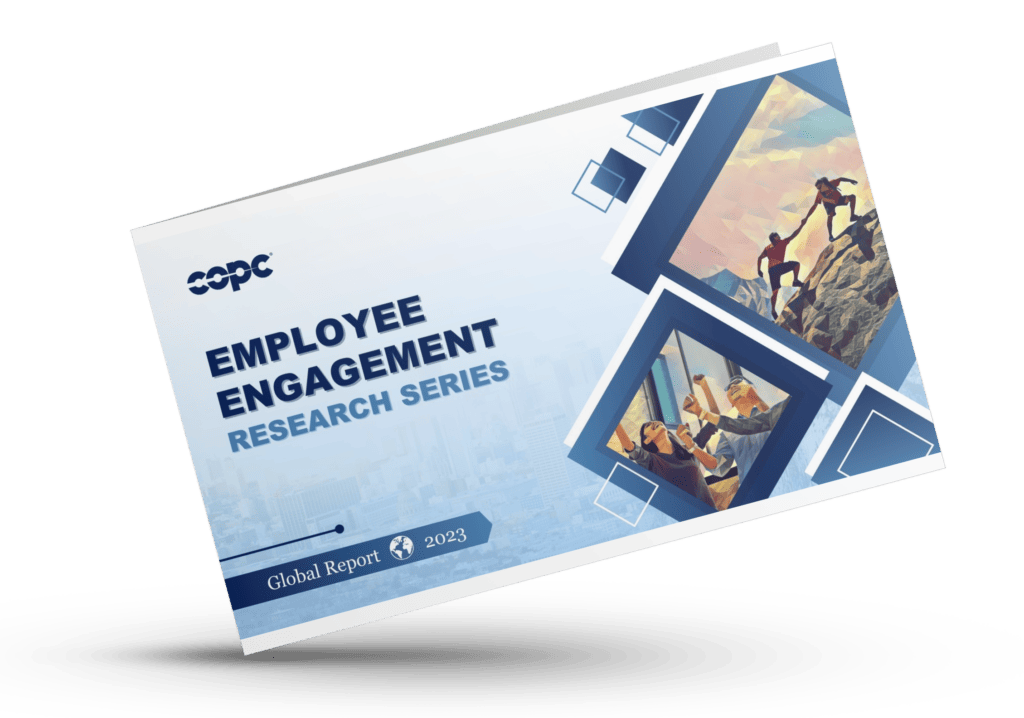
November 14, 2023
Employee engagement has become a priority for many organizations’ broader strategies for driving long-term growth. It makes sense that focusing on the heartbeat of the organization, the employees, is more important than ever to deliver better customer experiences and higher performance. Companies with highly engaged employees outperform their competitors and have higher retention with lower absenteeism.
Organizations often believe they have the right strategy and best intentions, but their culture does not always support them. It is easy to say that customer and employee experience are important and may even be part of a mission statement. But if culture and actions do not align with the strategy, it does more harm than good.
Peter Drucker made this quote famous, which is undoubtedly true in this context – “Culture eats strategy for breakfast.” Employee engagement strategies are only as successful as the company culture allows. Company culture begins at the top, with ongoing, consistent and visible efforts implemented at all levels of the organization.
The importance of the human element cannot be relegated to a mission statement or poster on the wall. It’s vital that organizations recognize employee engagement’s impact on the customer experience and, therefore, on overall success.

Employee Engagement Research Series
Learn how satisfied contact center staff are with their jobs, understand what drives employee satisfaction and distinguish the differences between countries.
Employee Engagement vs. Employee Satisfaction
There is a difference between employee engagement and satisfaction. An agent may be perfectly satisfied with their schedule, pay level, manager and work.
They show up to work, do their job, follow processes, and when asked to fill out an employee satisfaction survey, they say they are “satisfied.” They go through the motions of meeting minimum requirements because the work meets their basic needs. However, they do not go above and beyond and would consider another job if the opportunity came.
Conversely, an actively engaged employee is committed to their work and the organization and consistently goes the extra mile to exceed performance expectations. Contrary to the “satisfied” agent in the above scenario, an engaged agent is enthusiastic about their work and believes in the organization.
Engaged employees actively participate in the team’s success and proactively seek improvement. These agents collaborate with their managers and teammates on how to serve customers better. Most importantly, they are brand ambassadors, and their enthusiasm is evident to customers on the other end.
Put yourself in the customer’s shoes. Which agent would stand out to you? Which agent would you rather interact with if you had your choice? And which one would give you confidence that you are doing business with a brand that cares about its customers?
An engaged employee demonstrates satisfaction in their behavior, while a disengaged employee reports satisfaction because the organization meets their basic needs. The outcome is two vastly different results for both the customer and the business.
Determining the Level of Employee Engagement
It makes sense for organizations to create an environment that fosters a high level of commitment and passion. The challenge becomes understanding whether employees are sincerely engaged. While employee satisfaction surveys (ESAT) can provide a quantified measure of employee engagement, intangible characteristics offer an even better measure of engagement.
To gauge the level of engagement among your workforce, ask yourself whether your employees:
- Demonstrate enthusiasm and passion for serving customers and providing a superior experience.
- Take pride in their work, delivering high-quality results, even when not under supervision.
- Collaborate with their team members and managers in solving problems, improving performance, or assisting others.
- Take ownership of their performance and development, seeking new learning opportunities.
- Understand how their role fits into the broader organizational goals and mission.
- Advocate for the brand both internally and externally.
If you answer no to some or all of these questions, there is an opportunity for improvement.
Effective Employee Engagement Programs
To implement an effective employee engagement program, you must first understand employees’ intrinsic needs and create a strategy that satisfies these needs.
• Sense of belonging and well-being – “I feel included, valued, supported, and confident being my authentic self.”
• Purpose-filled – “My work and voice matter, and I know how it contributes to the company’s success.”
• Growth and recognition potential – “I have opportunities to gain experience, grow and receive recognition for high performance.”
• Empowered – “Leadership has faith in my abilities.”
• Trust – “I trust my organization to be transparent and do the right thing.”
Forward-thinking leaders fully realize that employee engagement is vital to the customer experience and, therefore, the organization’s overall success. Using these drivers as a backdrop, what can you do to build a culture and strategy that genuinely weaves employee engagement into the fabric of your organization and the broader CX strategy?

